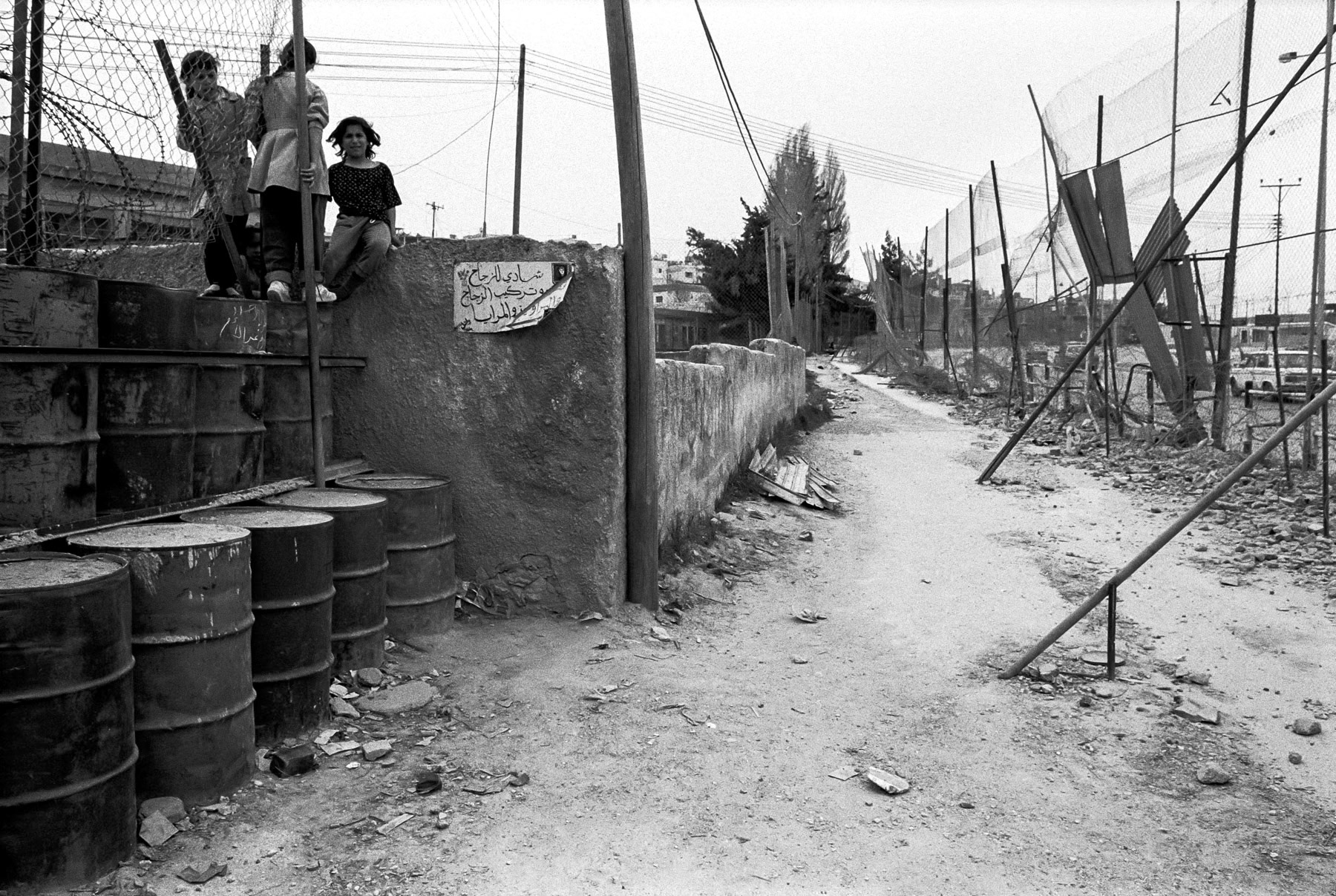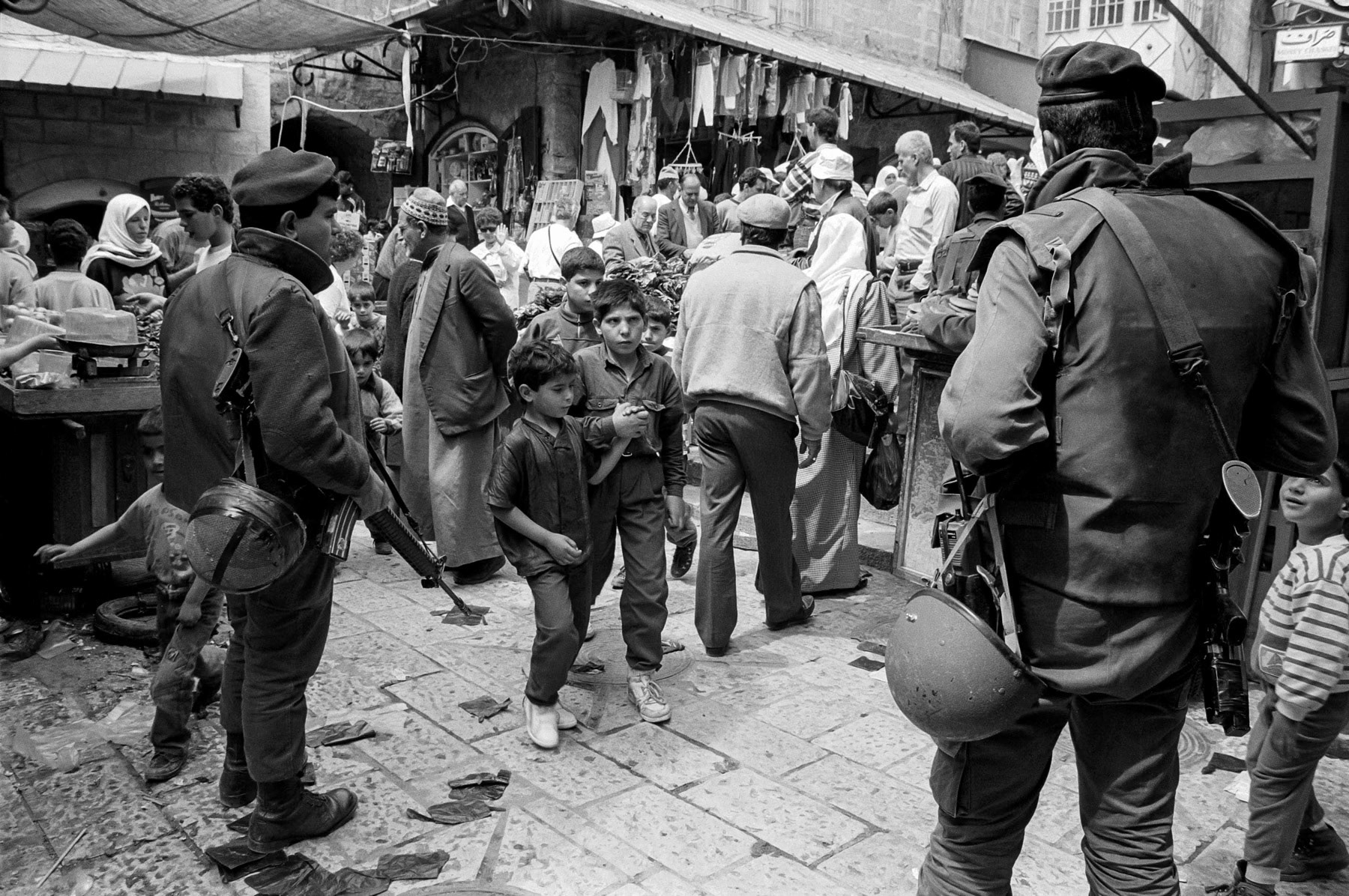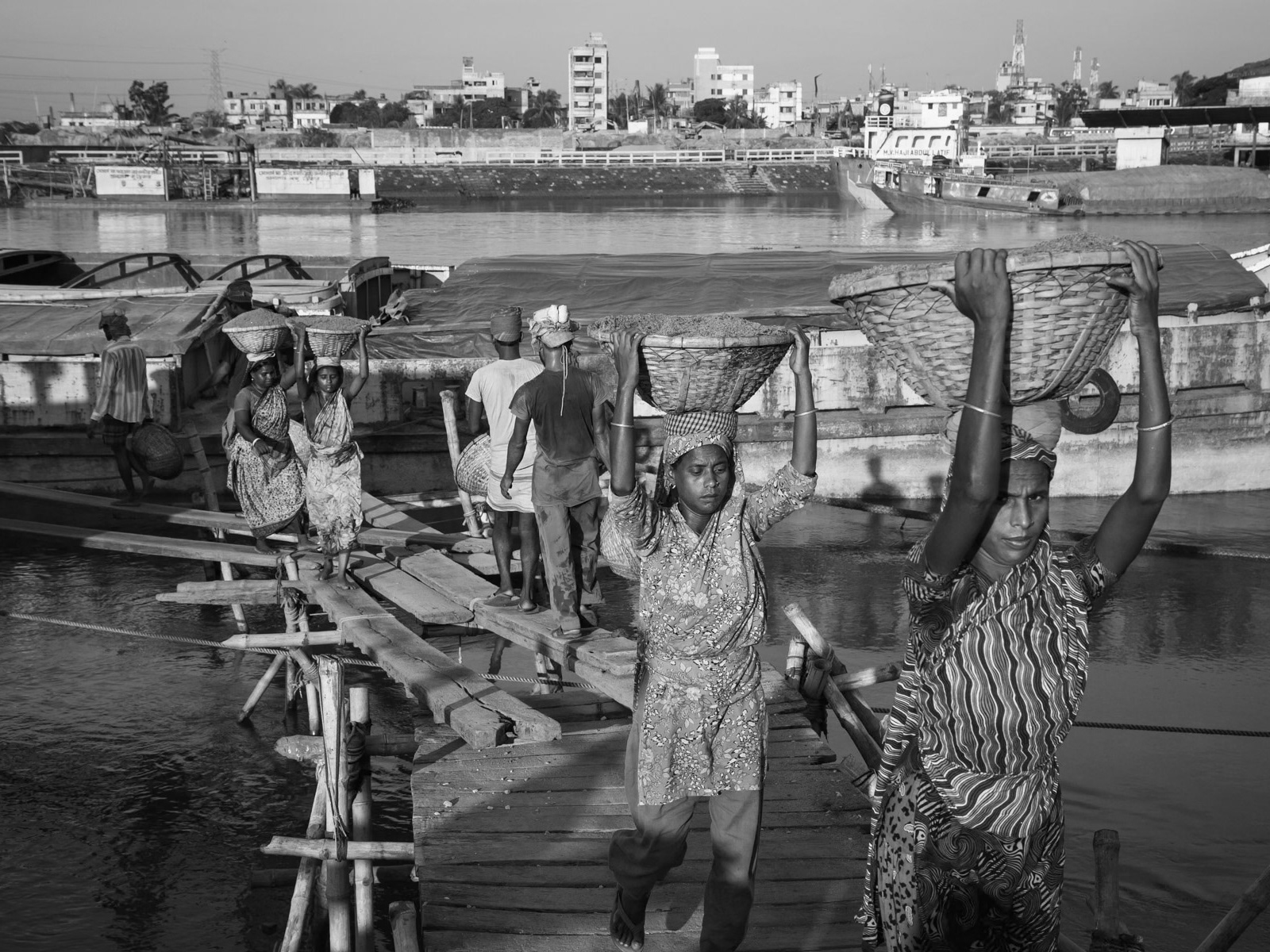During the First Intifada (1987–1993), Palestinian refugees in Gaza and West Bank camps faced severe constraints. Overcrowding, poverty, and limited access to basic services intensified under Israeli-imposed curfews, closures, and military crackdowns. Camps, often focal points of resistance, endured frequent raids, arrests, and house demolitions. Movement restrictions curtailed access to education, healthcare, and livelihoods. Refugees relied on grassroots organizations and solidarity networks to survive, but the hardships deepened their economic and social vulnerability. Despite these challenges, the camps symbolized resilience and played a crucial role in sustaining the uprising, showcasing the enduring struggle for dignity and self-determination.

Gaza refugee camp, Occupied Palestinian Territories, 1992

Damascus Gate in the Old City of Jerusalem, 1993

Main entrance of Dheisheh refugee camp, West Bank, 1992

Dheisheh refugee camp, West Bank, 1992

Border with Egypt in Rafah, Gaza Strip, 1992

Old City of Jerusalem, 1993

Main road Bethlehem-Hebron, Dheisheh refugee camp, 1992

Old City, Jerusalem, 1993

Dheisheh refugee camp near Bethlehem, West Bank, 1993

Old town, Jerusalem, 1993

Khan Younis, Gaza Strip, 1993

Outer fence along the main road, Dheisheh refugee camp in Bethlehem, West Bank, 1993

Muslim Quater in the Old City of Jerusalem, 1993

Dheisheh refugee camp, West Bank, April 1993










